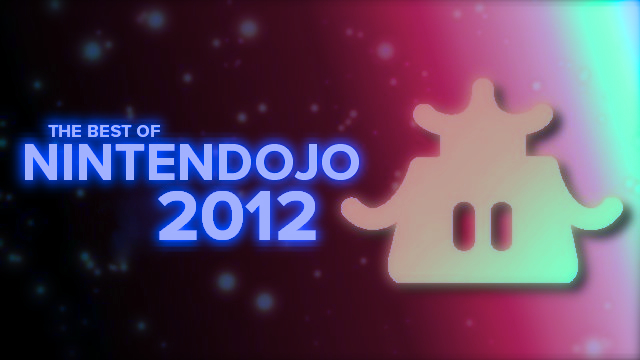|
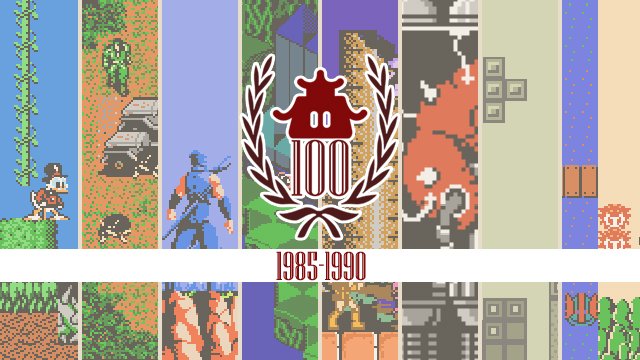 Welcome to Nintendojo’s Top 100 Nintendo Games! Over the course of this week, we’ll be unveiling our top games of the past 27 years, all divided into handy, bite-size year-group chunks. Today we’ll be counting down the Top 20 games from 1985 to 1990, so hold onto your Game Boys, kids– this list is about to get seriously retro.
Welcome to Nintendojo’s Top 100 Nintendo Games! Over the course of this week, we’ll be unveiling our top games of the past 27 years, all divided into handy, bite-size year-group chunks. Today we’ll be counting down the Top 20 games from 1985 to 1990, so hold onto your Game Boys, kids– this list is about to get seriously retro.
20. DuckTales (1989)
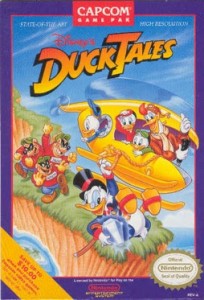
Back in the depths of time when licensed games were still good, DuckTales saw Scrooge McDuck set out on an epic quest to nab as much treasure as he could get his filthy little wings on. His journey took him from the depths of the Amazon rainforest to the surface of the moon and back, all the while runnin’ and jumpin’ like a certain blue bomber who may or may not feature on this list later on– it was made by Capcom, after all, with Mr. Mega Man himself, Keiji Inafune, on board as one of the key members of staff.
Scrooge could even choose which levels he wanted to tackle first, but what really made DuckTales stand out from its other Disney contemporaries was its solid gameplay, catchy soundtrack and bright, colourful levels. Scrooge’s cane was positively indestructible, allowing you to skewer or bounce off any enemy with it or strike them like a golf ball. Just a shame it was so short!
Why Michael Edwards loves DuckTales…
DuckTales was part of the Disney Afternoon, a cartoon block that aired when kids were getting home from school. DuckTales the game saw Scrooge and friends visiting five locations to hunt for treasure, playable in any order. While the sequence didn’t matter, you could return to certain levels to find new areas. Features like this, along with hidden rooms, gave DuckTales some depth beyond its straight-up platformer roots. Scrooge could also use his cane like a pogo stick, serving as a way to attack and jump higher and it also allowed him to bust open treasure chests. The amount of treasure you collected also altered the ending slightly. DuckTales was the king of the Capcom/Disney/NES years, with fans of the show being introduced to one of the best games released on NES, while those who hadn’t seen the show discovered the pinnacle of Disney television animation.
19. Dragon Warrior (1989)
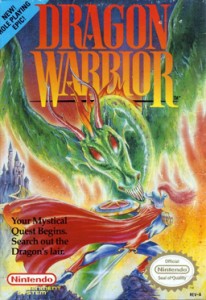
Before Final Fantasy was even a twinkle in Hironobu Sakaguchi’s eye, Dragon Warrior (or Dragon Quest, as it’s known in Japan) ruled the RPG roost. It popularised many of the genre’s defining traits, from level-grinding to random encounters and turn-based battles, and while it may seem quite simplistic by today’s standards, Dragon Warrior was one of NES’s first non-Nintendo hits.
As with so many RPGs, your young hero character is tasked with saving his kingdom and rescuing its princess from the evil Dragonlord. But even though there wasn’t really anything physically standing in your hero’s way, hoards of monsters certainly were. Their strength would increase the further you roamed from your town, and while talking to the townspeople to gather information about your next objectives was a crucial part of your preparations, Dragon Warrior was all about level-grinding. Level-grinding to advance, level-grinding to explore, level-grinding to level-grind. Thankfully it was one of the few NES games that allowed you to save your game, but it was still quite a niche title for the majority of gamers.
Why Andy Hoover loves Dragon Warrior…
In some ways, Dragon Warrior is to blame for the decline of the JRPG, because without it, the genre wouldn’t have risen to heights from which it could fall. Enix took the classic wizards and dragons of classic western PC RPGs like Ultima and Wizardry and simplified the design and infused a big helping of anime aesthetic. Sure, the story is as generic as humanly possible and party-of-one gameplay lacked much in the way of strategy or complexity, but all the basic elements were there.
Aside from birthing a genre, it also was the genesis of a franchise, known in its native Japan as Dragon Quest. Us westerners might prefer Final Fantasy, but Dragon Warrior is more or less an object of national obsession at home. Any game that manages to innovate to such an extent while also garnering such massive popularity has earned its place in history as one of the most significant games, and best as some would argue, of all time.
18. Punch Out!! (1987)
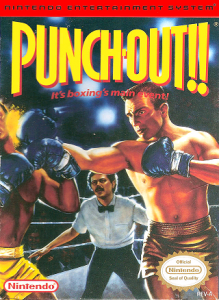
The only sports game to make the list, Punch Out!! was a truly shining example of the genre. You played as Little Mac, a tiny boxer with a powerful right hook, and your goal was to beat Mike Tyson, the premier heavy-weight boxing champion of the day (though this was changed to Mr. Dream in later versions of the game following a string of controversies surrounding Tyson in the late ’80s and early ’90s).
As you worked your way round the professional boxing circuits, you faced a variety of colourful opponents from the giant King Hippo to the hilariously un-PC Von Kaiser, but you only had a limited repertoire of moves at your disposal to secure your win. You also had to keep an eye on the timer and your number of hearts, but with referee cameos from Mario and a well-balanced set of opponents, Punch Out!! really was one of NES’s top knock-out titles.
Why Dustin Grissom loves Punch Out!!…
Although I wasn’t alive when this game came out, Punch-Out!! was my first ever game from the Virtual Console on Wii. I was immediately hooked after an embarrassingly long bout with Glass Joe. Day in and day out, I would study my opponent and do my best to counter his moves, uppercut at just the right time, and get that much closer to the coveted World Circuit. Although I never got to experience getting destroyed by Mike Tyson, I did take a hefty beating from Mr. Dream. This is the game that inspired a sequel on Wii, which, coincidentally, is one of my all-time favorites alongside the original.
17. Metal Gear (1988)
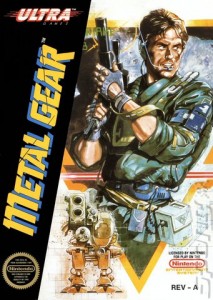
While we tend to associate Solid Snake and the Metal Gear series with PlayStation these days, Snake actually started his career on a very different console indeed. In fact, the heavily altered NES version of Metal Gear was a port of the MSX version, an early console produced by Microsoft in Japan, but regardless of his origins, this game essentially created the stealth genre. Snake had to infiltrate the fortified state of Outer Heaven to destroy Metal Gear, a bipedal tank that could launch nuclear missiles all over the world.
Even though Hideo Kojima wasn’t involved in this port, it was still extremely innovative for its time. You started the game unarmed, and you had to sneak past enemy guards until you found your trusty Beretta. But if they saw you the game entered its famous Alert mode, and it would even send in off-screen reinforcements to take you down if you were too sloppy or accidentally hit an alarm. It was unlike anything gamers had ever seen before, and it immediately made its mark on gaming history.
Why Pierre Bienaimé loves Metal Gear…
Back in the NES days, Nintendo held tight to a rather strange stipulation: namely, that no publisher would release more than five games in a given year. In true Solid Snake style, Konami decided to sneak round the embargo with the original Metal Gear by publishing it under the separate banner of Ultra Games. If it weren’t for that other Japanese giant’s creative loop hole, who knows where the series would now be. In its own right, Metal Gear was a game catering to brains rather than brawn. In his first appearance, Snake was granted top-down views of entire indoor and outdoor environments, allowing him to act unseen by patrolling guards. He broke the gaming mould of the time, which had all been focused on gunning down your enemies first rather than ask questions later, and if it weren’t for Solid Snake, we might never have been treated to some of Nintendo’s closer-to-home moments in The Legend of Zelda: Ocarina of Time, or even Super Smash Bros. Brawl. We owe you one, Snake.
16. Super Mario Bros. 2 (1988)
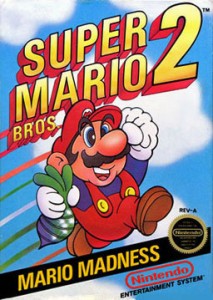
The Mario sequel that almost never was, thank goodness someone at Nntendo of America decided that Super Mario Bros.: The Lost Levels was too hard! Set in the strange dream land of Subcon, it was up to Mario to free said dream world from Wart, the frog king. In fact, you had Luigi, Toad or Princess Peach to pick from as well, and each character had their own unique abilities. For example, Mario can run faster than Luigi, but Luigi can jump higher. Toad, on the other hand can run and pluck vegetables the fastest, but is the worst at jumping, while Peach is the slowest but can hover and therefore jump the furthest.
It all came down to personal preference in the end, but one thing you couldn’t do was defeat enemies by jumping on their heads! Blasphemy! It also marked the first time you had a life meter, but while Super Mario Bros. 2 was a definite improvement over its predecessor in terms of graphics and gameplay, there’s no escaping that it’s ultimately a quick paint-job of another game to cash in on Mario’s popularity.
Why Mel Turnquist loves Super Mario Bros. 2…
While this was pretty much a re-skin of Yume Kōjō: Doki Doki Panic, a game for the Famicom Disk System in Japan, that doesn’t really factor into why I love this game. I love this game for its strangeness. It’s not quite like any other Mario game before or since. It gives you something that you don’t quite expect, but still find rather enjoyable. And the variety of characters that you could play with was another huge draw for me. Any opportunity to willingly pick Luigi is always a plus to me. Another reason I really love this game is actually more because of how much of it snuck into the present-day Mario canon. For such a black sheep game as it is, there’s a lot of enemies that made their way into the Mario canon– yet this was all supposedly a dream of Mario’s… that’s some weird Inception stuff right there. Birdo, Bob-ombs, Pokey, and Shy Guy all made their debut in this game. Also the personality quirks began to show in these games like Peach’s ability to float for a while, Luigi jumping very high, and Mario being kinda just the middle man. Those all began here. Not bad for such a black sheep.




 ShareThis
ShareThis